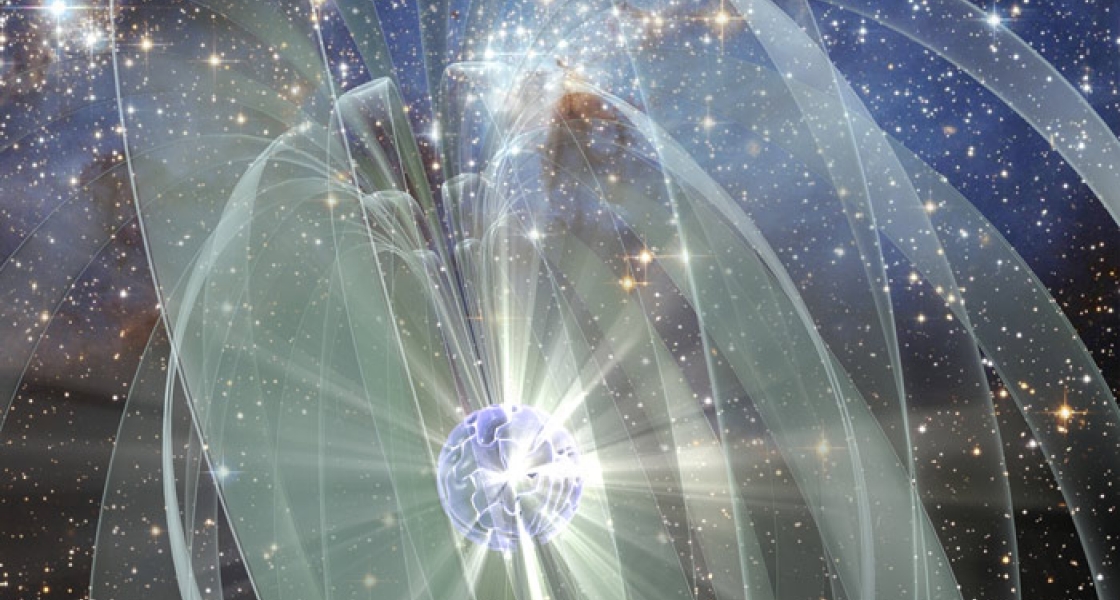Some stars die dramatically – the light from the supernova explosion of a distant massive star can outshine an entire galaxy. But this event isn’t the endgame for the star — the dense remnants of some of these explosions (called neutron stars) can spit out light rays over thousands of years.
Astronomers have noticed that some of these neutron stars emit bursts of high-energy light (x-rays and gamma-rays) at puzzlingly irregular intervals (Figure 1). Recently, Fellow Rosalba Perna and her colleague Jose Pons at the Universitat d’Alacant, performed calculations that may help dispel the mystery. They started with the fact that some neutron stars have very strong magnetic fields — the strongest known to humans. They are dubbed magnetars. Perna and Pons were able to connect the magnetic field strength and geometryin magnetars to stellar shake-ups known as starquakes . Starquakes are responsible for the resulting bursts of light rays from neutron stars.
Neutron stars are hot and dense. The inside of a neutron star consists of a liquid soup of free-floating subatomic particles, but its cooler outer surface forms a solid crust. This crust can crack under strain during a starquake. These starquakes occur when internal magnetic fields, which shift and rearrange themselves over time, overcome the strength of the crust, and the crust cracks. The crust then rearranges itself into a more stable position.
This process has an analogy on Earth, where the buildup of energy due to shifting plates and faults beneath the surface is released through earthquakes. On a neutron star, the resulting release of magnetic energy shakes the particles in its atmosphere, creating bursts of light. Thus, the high-energy light emitted by a magnetar is believed to occur during starquakes when the crust of the neutron star cracks.
However, many questions about these bursts of light are still unanswered: What controls the seemingly random frequency of these light-ray bursts? Why do some neutron stars display bursts, while others with similar magnetic fields do not?
“So the question was, OK, if the magnetic field is responsible for everything, then how is it that we can still have this variety of behaviors among different objects?” said Perna.
Perna and Pons used numerical simulations of the magnetic field in the crust of a magnetar to see both how the magnetic field changes over time and when the stresses due to the magnetic field result in a starquake and a light burst. Their model took into account not just the overall strength of the magnetic field, but its geometry, or how it is oriented throughout space. After setting such parameters of the simulation as the initial temperature and the magnetic field of the magnetar, they used their code to calculate the new magnetic fields at regular intervals during the life of the hypothetical magnetar over a period of up to 100,000 years. Every time the magnetic stresses were sufficient to break the crust, a starquake was predicted.
“What we found was that younger magnetars tend to be more active and older magnetars tend to be less active,” said Perna, adding that starquakes typically occur more often in younger objects, where they also release more energy. For both older and younger magnetars, the occurrence of starquakes is not simply related to the strength of the magnetic field, however. The geometry of the magnetic field also plays a very important role. The results of Perna’s and Pons’ simulations match some key observations such as the fact that astronomers have documented fewer giant flares than smaller bursts and the occurrence of bursts in neutron stars with relatively low magnetic fields.
Until now, researchers understood many of the details of how gamma and x-ray bursts occur. However, Perna and Pons have helped explain (1) why the bursts occur at seemingly irregular intervals, (2) why the same magnetar might behave differently at different times over its life span, and (3) why some objects with apparently similar magnetic fields have very different light-ray-bursting behavior. — Stephanie Chasteen




